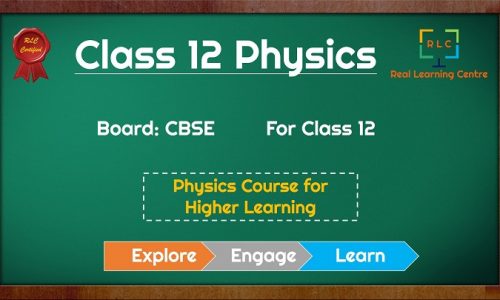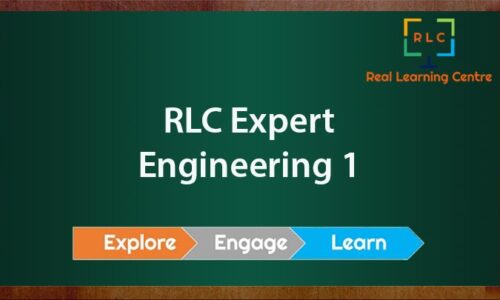Course Features
- Lectures 109
- Quizzes 0
- Duration 50 hours
- Skill level All levels
- Language English
- Students 4
- Assessments Yes
Curriculum
- 4 Sections
- 109 Lessons
- 20 Weeks
Expand all sectionsCollapse all sections
- Physics32
- 2.11 :: Micro to Macro Universe
- 2.2Q 1.1 :: Micro universe
- 2.3Q 1.2 :: Macro universe
- 2.42 :: Solar System
- 2.5Q 2.1 :: Sun, Earth and Moon
- 2.6Q 2.1 :: Eclipses
- 2.73 :: Motion
- 2.8Q 3.1 :: Motion is Relative
- 2.9Q 3.2 :: Distance and Displacement
- 2.104 :: Kinematics graphs
- 2.11Q 4.2 :: Ploting graphs of equations
- 2.125 :: Laws of Motion
- 2.13Q 5.1 :: Cause of Motion
- 2.14Q 5.2 :: Newton’s 1st Law
- 2.15Q 5.3 :: Newton’s 2nd Law
- 2.16Q 5.4 :: Newton’s 3rd Law
- 2.176 :: Energy
- 2.18Q 6.1 :: Energy Chain
- 2.197 :: Gravitation
- 2.20Q 7.1 :: Newton’s universal law of gravitation and ‘g’
- 2.218 :: Light
- 2.22Q 8.1 :: Reflection and refraction
- 2.23Q 8.2 :: Spherical Mirrors and lenses
- 2.249 :: Nuclear Physics
- 2.25Q 9.1 :: Atomic model
- 2.2610 :: Electricity
- 2.27Q 10.1 :: Static Electricity – Charge
- 2.28Q 10.2 :: Current Electricity – Electric current
- 2.2911 :: Magnetism
- 2.30Q 11.1 :: What are magnets?
- 2.3112 :: Heat
- 2.32Q 12.1 :: Temperature and Heat
- Chemistry26
- 3.11 :: Atomic structure and Electronic Configuration
- 3.2Q 1.1 :: Atomic models
- 3.3Q 1.2 :: Quantum numbers
- 3.4Q 1.3 :: Electronic configuration
- 3.52 :: Periodic table
- 3.6Q 2.1 :: Evolution of modern periodic table
- 3.7Q 2.2 :: Periodic properties
- 3.83 :: Chemical bonding
- 3.9Q 3.1 :: Why chemical bonds?
- 3.10Q 3.2 :: Ionic Bonds
- 3.11Q 3.3 :: Covalent Bonds
- 3.124 :: Acids and Bases
- 3.13Q 4.1 :: Definitions of acids and bases
- 3.14Q 4.2 :: Properties of acids and bases
- 3.155 :: Metals and Nonmetals
- 3.16Q 5.1 :: Metals and their characteristics
- 3.17Q 5.2 :: Chemical properties of metals
- 3.18Q 5.3 :: Nonmetals and their properties
- 3.19Q 5.4 :: Chemical properties of nonmetals
- 3.206 :: Hydrocarbons
- 3.21Q 6.1 :: Properties of Carbon
- 3.22Q 6.2 :: Intro to hydrocarbons
- 3.23Q 6.3 :: IUPAC nomenclature of hydrocarbons
- 3.24Q 6.4 :: Properties of hydrocarbons
- 3.257 :: Gas Laws
- 3.26Q 7.1 :: Relationship between P, V and T
- Mathematics28
- 4.11 :: Numbers
- 4.2Q 1.1 :: Prime numbers
- 4.3Q 1.2 :: Prime factorization, LCM and HCF
- 4.4Q 1.3 :: Real world problems
- 4.52 :: Simple equations
- 4.6Q 2.1 :: Solving simple equations
- 4.7Q 2.2 :: Practice Problems
- 4.83 :: Factorization
- 4.9Q 3.1 :: Algebraic Identities
- 4.10Q 3.2 :: Problems based on Identities
- 4.114 :: Triangles
- 4.12Q 4.1 :: Triangles Theorems
- 4.14Q 4.2 :: Congruent triangles
- 4.15Q 4.3 :: Pythagoras theorem
- 4.165 :: Fractional expressions
- 4.17Q 5.1 :: Arithmetic operations on fractions
- 4.18Q 5.2 :: Simplification of fractions
- 4.196 :: Simultaneous equations
- 4.20Q 6.1 :: Methods of solving simultaneous equations
- 4.21Q 6.2 :: Practice Problems
- 4.227 :: Quadratic Equations
- 4.23Q 7.1 :: Solving equation – by factoring and by completing square
- 4.24Q 7.2 :: Developing formula
- 4.258 :: Circles
- 4.26Q 8.1 :: Circle Theorems
- 4.279 :: Areas and Volumes
- 4.28Q 9.1 :: Areas and perimeters of simple plane figures part 1
- 4.29Q 9.2 :: Areas and perimeters of simple plane figures part 2
- Biology23
- 5.11 :: Life processes
- 5.2Q 1.1 :: Digestive system
- 5.3Q 1.2 :: Respirstory system
- 5.4Q 1.3 :: Circulatory system
- 5.5Q 1.4 :: Reproductory system
- 5.62 :: Control and Coordination
- 5.7Q 2.1 :: Nervous system
- 5.8Q 2.2 :: Hormones
- 5.93 :: Cell biology
- 5.10Q 3.1 :: The Cell
- 5.11Q 3.2 :: Cell Organelles and functions part 1
- 5.12Q 3.3 :: Cell Organelles and functions part 2
- 5.13Q 3.4 :: Cell cycle
- 5.14Q 3.5 :: Cell division – Mitosis
- 5.15Q 3.5 :: Cell division – Meiosis
- 5.174 :: Genetics
- 5.19Q 4.2 :: Mendel’s experiments and laws part 1 & 2
- 5.20Q 4.3 :: Mendel’s experiments and laws part 3
- 5.215 :: Immunology
- 5.22Q 5.1 :: Microorganisms and diseases
- 5.236 :: Botany
- 5.24Q 6.1 :: Tissues
- 5.25Q 6.2 :: Photosynthesis






